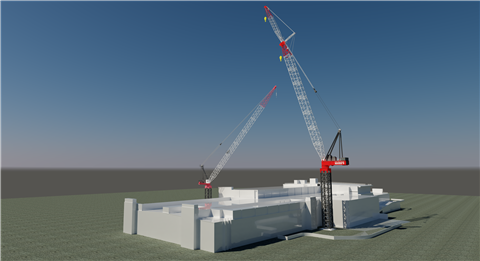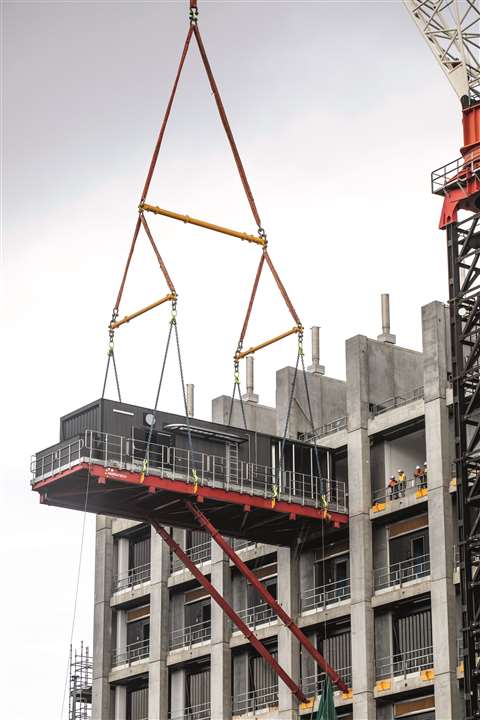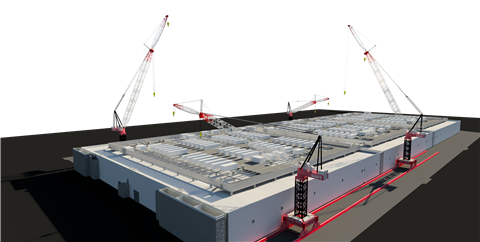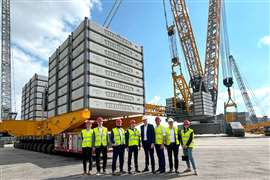How to construct a data centre safely and more efficiently
20 April 2023
How to improve safety and efficiency in data centre construction. Alex Dahm reports
Heavy lift tower crane specialist Marr Contracting has added another construction niche to its portfolio of expertise in saving time and money for clients.
 Marr CAD drawing of data centre construction from a fixed location (Image: Marr Contracting)
Marr CAD drawing of data centre construction from a fixed location (Image: Marr Contracting)
The Australian company is applying its expertise with a fleet of the world’s largest luffing jib tower cranes for the construction of data centres.
As the world is rapidly digitising, huge low-rise, large area, buildings are being built around the world to house banks of computer servers. Marr’s new way of thinking for this application simplifies the construction process. The approach improves safety while also saving time and money for the client.
 One of Marr’s bespoke solutions to improve productivity in data centre construction (Photo: Marr Contracting)
One of Marr’s bespoke solutions to improve productivity in data centre construction (Photo: Marr Contracting)
The idea is to increase efficient access to multiple work fronts while at the same time reducing the total number of cranes on a project.
“We are seeing clients we are working with in Australia completing data centre projects in six months, compared with other constructors we are in discussion within the UK and USA taking 12 months,” said Simon Marr, Marr Contracting managing director.
Early involvement
Marr’s early involvement with a project is a key factor to gain the full benefit. “We are constantly looking at how we can add value back into a project and that means looking at how we can improve efficiency and secure the constructor’s schedule. The key to achieving maximum efficiency is early engagement with us – and the earlier the better,” Marr explained.
From the beginning the large cranes, for example, the Favco M2480D that can lift 330 tonnes, can lift larger prefabricated steel and precast concrete elements. It means fewer lifts and less work at height. Quality should also be higher as much of the component installation can be done at ground level, often in a factory-type environment.
Fewer moves
The cranes’ long reach of 120 metres also helps minimise the number of cranes needed on a site and reduces the number of times cranes need to be moved, often even to just a single position.
 Data centre build using Marr’s Transit System (Photo: Marr Contracting)
Data centre build using Marr’s Transit System (Photo: Marr Contracting)
Marr explained some of the issues he has encountered with a conventional construction approach, “In one data centre project, the contractor used traditional methods with crawler cranes which sat outside the building. The site became congested, and ‘confused’.
“Service infrastructure such as power or water couldn’t be installed because cranes were sitting in the way. They were compromised as to what they could lift where and when.
“In contrast, we worked closely with a client on a recent project, who understood how we could help secure their schedule and support their construction methodology. They adopted our craneage philosophy and their project was completed in half the time of the other build. Now this company has become the partner builder for a data centre provider, and every data centre they build is being completed faster. The last one was completed in just 35 weeks, using our cranes.”
STAY CONNECTED


Receive the information you need when you need it through our world-leading magazines, newsletters and daily briefings.
CONNECT WITH THE TEAM












